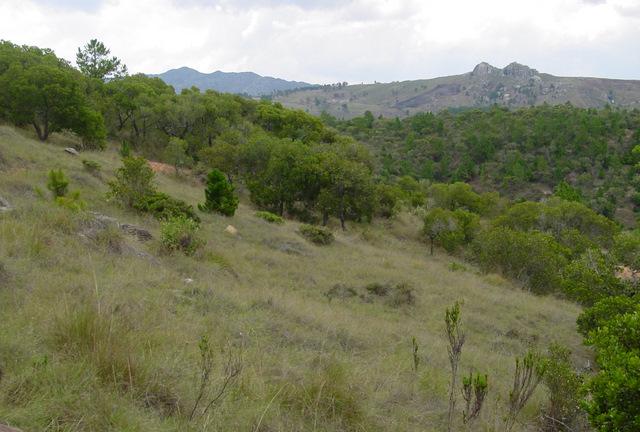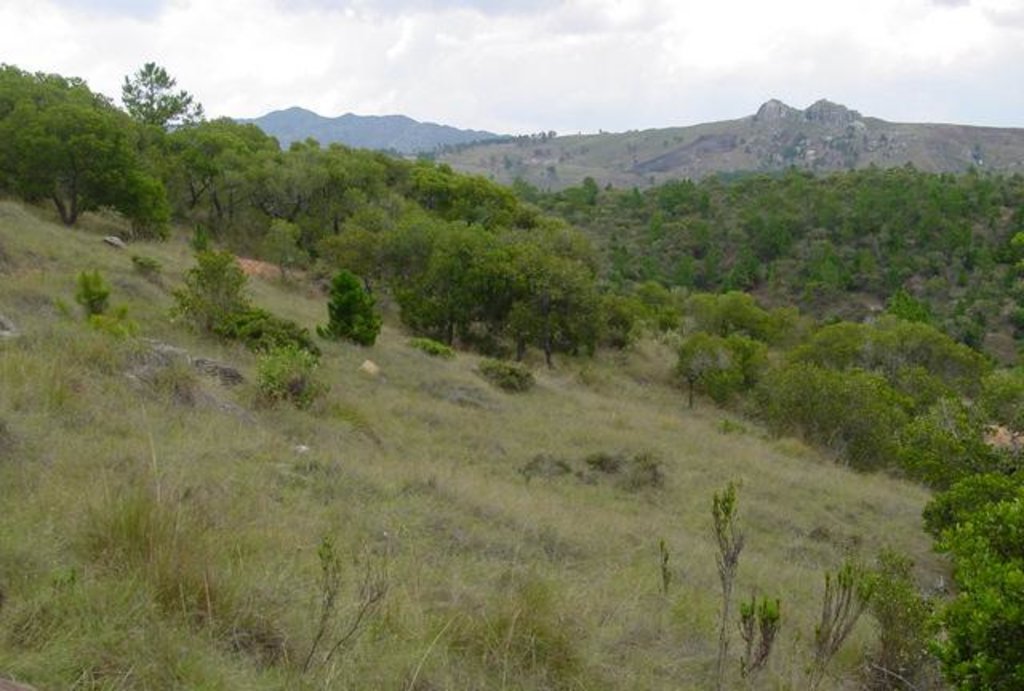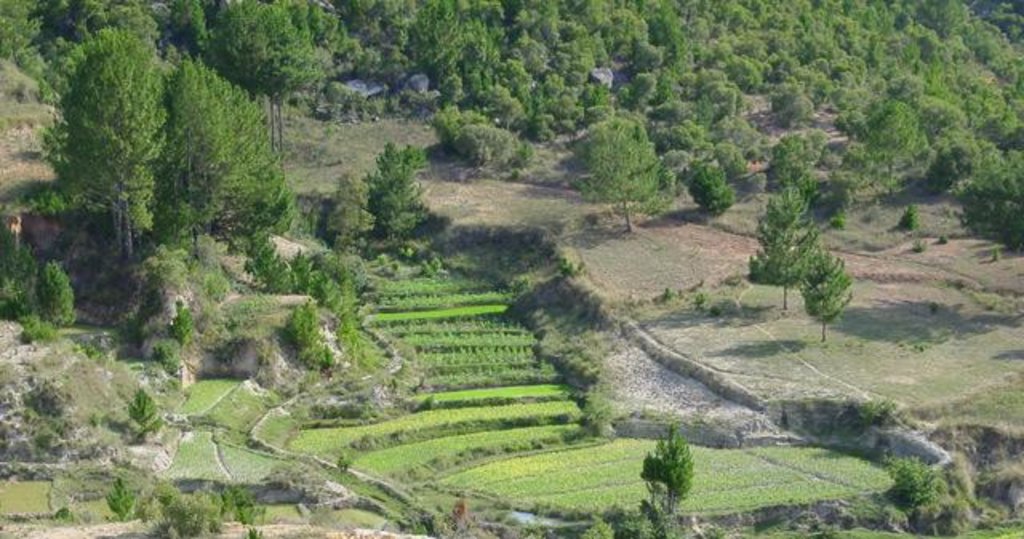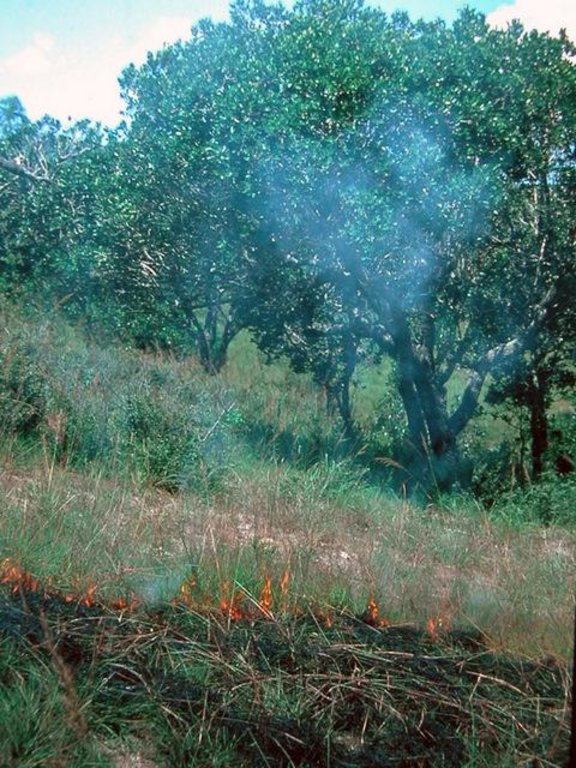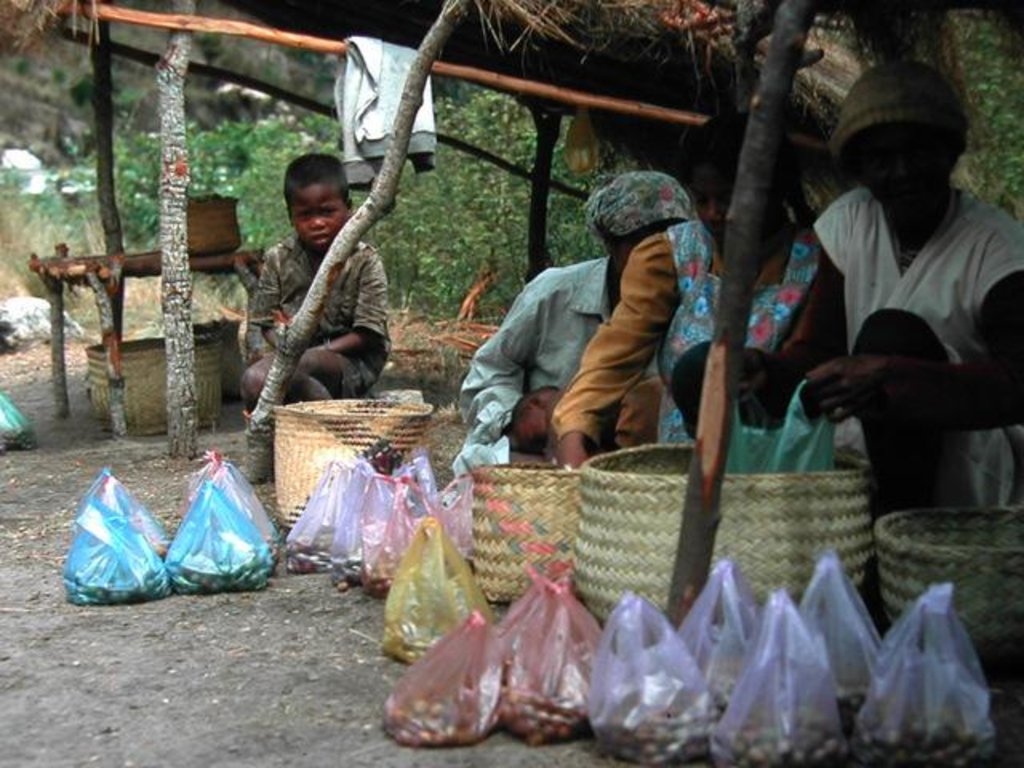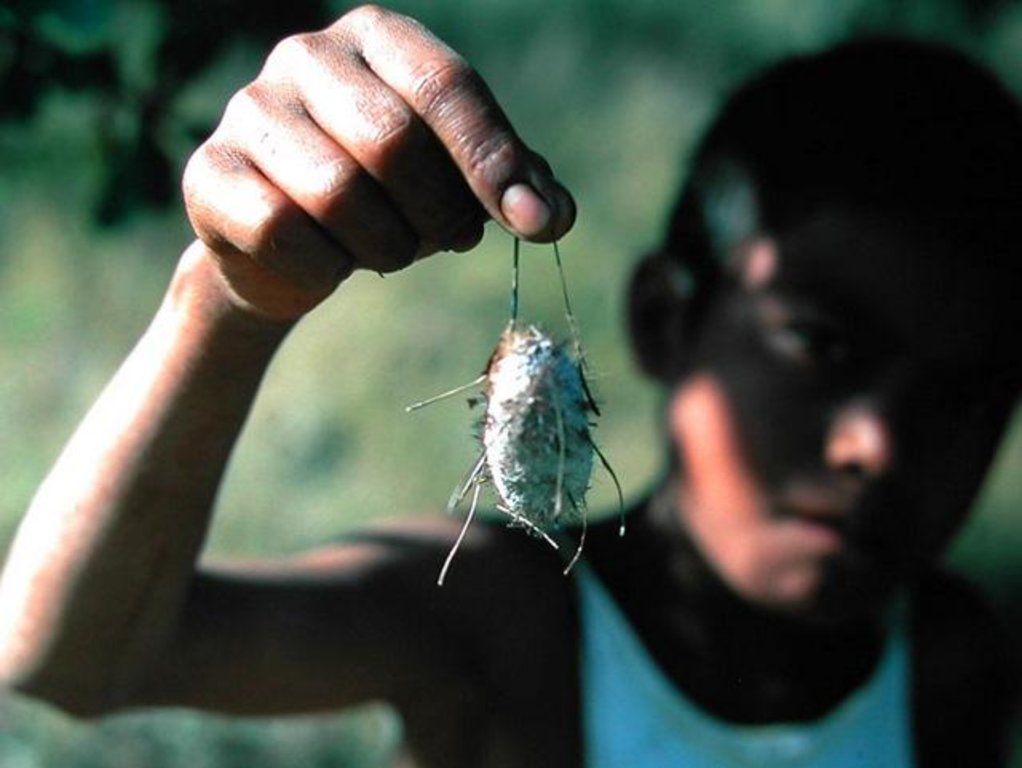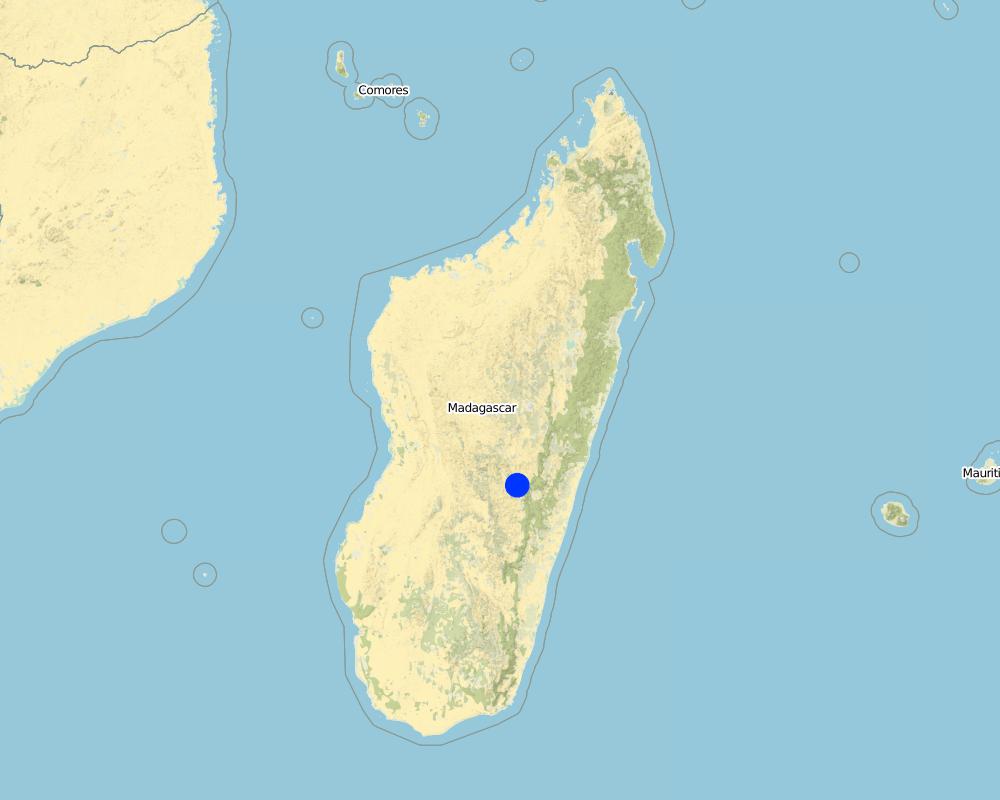Indigenous Management of Tapia Woodlands [马达加斯加岛]
- 创建:
- 更新:
- 编制者: Unknown User
- 编辑者: –
- 审查者: David Streiff, Fabian Ottiger, Alexandra Gavilano
technologies_1359 - 马达加斯加岛
查看章节
全部展开 全部收起1. 一般信息
1.2 参与该技术评估和文件编制的资源人员和机构的联系方式
关键资源人
SLM专业人员:
Kull Christian
School of Geography and Environmental Science, Monash University
澳大利亚
有助于对技术进行记录/评估的机构名称(如相关)
School of Geography and Environmental Science, Monash University - 澳大利亚1.3 关于使用通过WOCAT记录的数据的条件
编制者和关键资源人员接受有关使用通过WOCAT记录数据的条件。:
是
2. SLM技术的说明
2.1 技术简介
技术定义:
For centuries, the population of the highlands of central and south-western Madagascar has sustainably managed and conserved the local tapia woodlands.
2.2 技术的详细说明
说明:
These woodlands play an important economic role as a source of non-timber forest products (NTFP) such as wild silk, fruit, mushrooms, edible insects, and herbal medicines. Tapia trees (Uapaca bojeri) comprise up to 90% of all trees in these woodlands, bear an edible fruit, and their leaves nourish an endemic silkworm (landibe). Landibe silk is used to produce ritual burial shrouds throughout the highlands. Trading silk products and tapia fruits is a crucial source of cash income for the local communities. The tapia woodlands are maintained by the local villagers through burning and selective cutting. Burning favours the dominance of pyrophytic (fire-tolerant) tapia trees and protects silkworms from parasites. Selective cutting of non-tapia species and pruning of dead branches also favours tapia dominance and perhaps growth. Other common species include the endemic Sarcolaena eriophora and the invasive Pinus patula/khasya. The Tapia woodland is clearly an anthropogenically shaped forest. However, the creation and maintenance of the woodlands should be seen as positive transformation rather than a form of degradation.
Local and state-imposed regulations protect the woodlands from overexploitation. The Forest Service has placed restrictions on forest cutting and burning while allowing for traditional use rights. The collection of forest products is regulated through a type of common-property regime. For example, fuelwood collection is limited to dead trees or fallen branches. It is forbidden to break off large branches to access cocoons. Thanks to these protective regulations, forest boundaries are mostly stable, and woodland density has increased in several cases.
2.3 技术照片
2.5 已应用该技术的、本评估所涵盖的国家/地区/地点
国家:
马达加斯加岛
区域/州/省:
Col des Tapia
有关地点的进一步说明:
Antsirabe and Ambositra
具体说明该技术的分布:
- 均匀地分布在一个区域
如果技术均匀分布在一个区域,则指定覆盖的区域(单位为平方千米):
2600.0
注释:
Total area covered by the SLM Technology is 2600 km2.
Map
×2.6 实施日期
如果不知道确切的年份,请说明大概的日期:
- 50多年前(传统)
2.7 技术介绍
详细说明该技术是如何引入的:
- 作为传统系统的一部分(> 50 年)
3. SLM技术的分类
3.1 该技术的主要目的
- 保护生态系统
- 创造有益的经济影响
3.2 应用该技术的当前土地利用类型
同一土地单元内混合使用的土地::
是
具体说明混合土地使用(作物/放牧/树木):
- 林牧业

牧场

森林/林地
- (半天然)天然森林/林地
- Sustainable forest management
(半天然)天然森林/林地:具体说明管理类型:
- 选伐
产品和服务:
- 木材
- 薪材
- 水果和坚果
- 其它森林产品
- 放牧/啃牧
注释:
Major land use problems (land users’ perception): Reduction of vegetation cover; Quantity biomass decline
Selective felling of (semi-) natural forests: Yes
Other type of forest: sustainable forest management
Forest products and services: fuelwood, fruits and nuts, other forest products / uses (honey, medical, etc.)
3.5 该技术所属的SLM组
- 天然和半天然森林管理
- 养蜂、养殖业、家禽业、养兔业、养蚕业等
3.6 包含该技术的可持续土地管理措施

管理措施
- M2:改变管理/强度级别
注释:
Main measures: management measures
3.7 该技术强调的主要土地退化类型

生物性退化
- Bc:植被覆盖的减少
- Bq:数量/生物量减少
注释:
Main type of degradation addressed: Bc: reduction of vegetation cover, Bq: quantity / biomass decline
3.8 防止、减少或恢复土地退化
具体数量名该技术与土地退化有关的目标:
- 防止土地退化
- 减少土地退化
注释:
Main goals: prevention of land degradation, mitigation / reduction of land degradation
4. 技术规范、实施活动、投入和成本
4.1 该技术的技术图纸
技术规范(与技术图纸相关):
Technical knowledge required for field staff / advisors: (traditional practice)
Technical knowledge required for land users: low (children often harvest fruit; silk cocoon harvest is easy)
Main technical functions: control of raindrop splash, improvement of ground cover, stabilisation of soil (eg by tree roots against land slides), increase in organic matter, increase of biomass (quantity), promotion of vegetation species and varieties (quality, eg palatable fodder), control of fires, spatial arrangement and diversification of land use
Change of land use practices / intensity level: The tapia woodlands are maintained by the local villagers through burning and selective cutting
4.2 有关投入和成本计算的一般信息
具体说明成本计算所用货币:
- 美元
4.3 技术建立活动
| 活动 | 时间(季度) | |
|---|---|---|
| 1. | N |
4.5 维护/经常性活动
| 活动 | 时间/频率 | |
|---|---|---|
| 1. | Selective cutting of non-tapia species, especially invasive pines | |
| 2. | Pruning of dead branches | |
| 3. | Controlled burning mainly through understory fires after the rainy season | Jan-May |
| 4. | Collection of non-wood forest products such as fruits, medicinal plants, mushrooms, berries, insects, and hunting of mammals etc | Sept.-Dec |
| 5. | Collection of landibe silkworm twice a year. The cocoons are cooked, spun and woven into silk fabric | Nov-Dec and May-June |
4.6 维护/经常性活动所需要的费用和投入(每年)
| 对投入进行具体说明 | 单位 | 数量 | 单位成本 | 每项投入的总成本 | 土地使用者承担的成本% | |
|---|---|---|---|---|---|---|
| 劳动力 | Labour | ha | 1.0 | 20.0 | 20.0 | 100.0 |
| 技术维护所需总成本 | 20.0 | |||||
| 技术维护总成本,美元 | 20.0 | |||||
注释:
Traditional method; no establishment phase and costs.
4.7 影响成本的最重要因素
描述影响成本的最决定性因素:
The estimation of costs is difficult - fruit are gathered over a two month period by school children going out for an hour in the early morning each day; the silkworms are collected by individuals (usually experienced collectors) on free days. In some areas, projects exist that run silkworm nurseries, establish firebreaks in the woodlands, grow and plant tapia seedlings, and finance the purchase of silk looms. These projects obviously require much larger budgets.
5. 自然和人文环境
5.1 气候
年降雨量
- < 250毫米
- 251-500毫米
- 501-750毫米
- 751-1,000毫米
- 1,001-1,500毫米
- 1,501-2,000毫米
- 2,001-3,000毫米
- 3,001-4,000毫米
- > 4,000毫米
有关降雨的规范/注释:
7 months of dry season
农业气候带
- 半湿润
Thermal climate class: tropics
5.2 地形
平均坡度:
- 水平(0-2%)
- 缓降(3-5%)
- 平缓(6-10%)
- 滚坡(11-15%)
- 崎岖(16-30%)
- 陡峭(31-60%)
- 非常陡峭(>60%)
地形:
- 高原/平原
- 山脊
- 山坡
- 山地斜坡
- 麓坡
- 谷底
垂直分布带:
- 0-100 m a.s.l.
- 101-500 m a.s.l.
- 501-1,000 m a.s.l.
- 1,001-1,500 m a.s.l.
- 1,501-2,000 m a.s.l.
- 2,001-2,500 m a.s.l.
- 2,501-3,000 m a.s.l.
- 3,001-4,000 m a.s.l.
- > 4,000 m a.s.l.
关于地形的注释和进一步规范:
Slopes on average: hilly (16-30%), steep (31-60%), very steep (>60%)
Altitudinal zones: 500-2000 m a.s.l.
5.3 土壤
平均土层深度:
- 非常浅(0-20厘米)
- 浅(21-50厘米)
- 中等深度(51-80厘米)
- 深(81-120厘米)
- 非常深(> 120厘米)
土壤质地(表土):
- 粗粒/轻(砂质)
表土有机质:
- 低(<1%)
如有可能,附上完整的土壤描述或具体说明可用的信息,例如土壤类型、土壤酸碱度、阳离子交换能力、氮、盐度等。:
Soil texture is coarse/light (sandy) (silica-rich soils compared to the main lateritic soils of highland Madagascar)
Soil fertility is low ( mostly nutrient-poor or rocky soils )
Soil drainage/infiltration is good
5.6 应用该技术的土地使用者的特征
生产系统的市场定位:
- 生计(自给)
- 混合(生计/商业)
说明土地使用者的其他有关特征:
Land users applying the Technology are mainly disadvantaged land users
Difference in the involvement of women and men: Population density: 20-40 persons/ km2 in the central highlands and 10-20 in the western highlands
5.7 应用该技术的土地使用者使用的平均土地面积
- < 0.5 公顷
- 0.5-1 公顷
- 1-2 公顷
- 2-5公顷
- 5-15公顷
- 15-50公顷
- 50-100公顷
- 100-500公顷
- 500-1,000公顷
- 1,000-10,000公顷
- > 10,000公顷
这被认为是小规模、中规模还是大规模的(参照当地实际情况)?:
- 小规模的
5.8 土地所有权、土地使用权和水使用权
土地所有权:
- 州
土地使用权:
- 社区(有组织)
注释:
Woodlands are officially state-owned, but in practice managed by neighbouring communities (either unofficially, or increasingly through community-based management contracts
6. 影响和结论性说明
6.1 该技术的现场影响
社会经济效应
生产
木材生产
注释/具体说明:
Stable supply of fuelwood
收入和成本
农业收入
注释/具体说明:
Through selling silk-fabrics and other NTFP
其它社会经济效应
Production of NTFP as important dietary supplements
Provision of medicinal plants
社会文化影响
食品安全/自给自足
注释/具体说明:
Thorugh the forest products
文化机会
注释/具体说明:
Sacred forest
生态影响
土壤
土壤覆盖层
土壤流失
生物多样性:植被、动物
生物量/地上C
植物多样性
注释/具体说明:
Endemic biodiversity
6.3 技术对渐变气候以及与气候相关的极端情况/灾害的暴露和敏感性(土地使用者认为的极端情况/灾害)
注释:
Silk and fruit harvests vary from season to season but drivers are poorly understood (could include precipitation and temperature)
6.4 成本效益分析
技术收益与技术维护成本/经常性成本相比如何(从土地使用者的角度看)?
短期回报:
积极
长期回报:
积极
注释:
The larger rainy season silk harvest provides crucial cash income during the meagre months before the rice harvest. In 1998 the price of 200 cocoons was between US$ 0.10-0.15. For a basket of Tapia fruits villagers earned between 0.02-0.06 US$/ kg. During
6.5 技术采用
注释:
Comments on adoption trend: see Annex 3
6.7 该技术的优点/长处/机会
| 编制者或其他关键资源人员认为的长处/优势/机会 |
|---|
| Thanks to these protective regulations, forest boundaries are mostly stable, and woodland density has increased in several cases |
| La vente des produits en soie et des fruits de Tapia est une source de revenus capitale pour les communautés locales |
6.8 技术的弱点/缺点/风险及其克服方法
| 编制者或其他关键资源人员认为的弱点/缺点/风险 | 如何克服它们? |
|---|---|
| Partly individual indiscriminate cutting and/or strong use of fires leads to overuse of the forest resources | needs clear regulations, guidelines and observation of the rules by the local authorities as well as awareness raising about the multiple benefits of the forests. As long as the communities continue to be interested in the forests and its products, they will protect it from destructive cutting. |
| Invasion of exotic tree species such as pine and eucalyptus from private and village woodlots | the forest service has rightly been encouraging communities to cut these trees from the tapia forests without the need for complicated permits. |
| Insecure land use rights | in 1996 a new legislation opened the way to officially decentralize management of state-owned renewable natural resources to adjacent communities, which would aid woodland protection by increasing stakeholder involvement. |
| In some areas, silkworm populations have been very low for decades | recent projects seek to establish silk nurseries and reintroduce the worm |
7. 参考和链接
7.2 参考可用出版物
标题、作者、年份、ISBN:
Kull CA (2002): The ‘Degraded’ Tapia Woodlands of Highland Madagascar: Rural Economy, Fire Ecology, and Forest Conservation. Journal of Cultural Geography Spring/ Summer 2002.
链接和模块
全部展开 全部收起链接
无链接
模块
无模块


